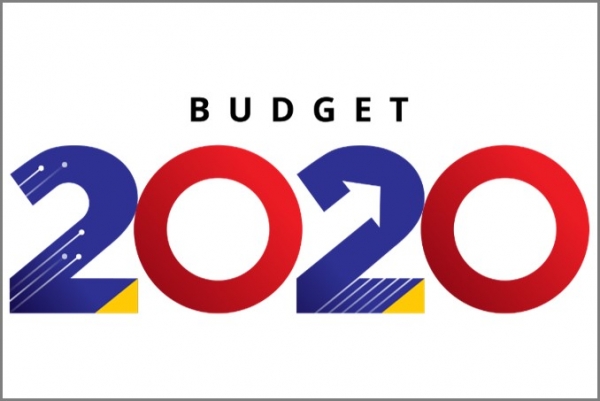2020 Budget: Expansionary yet Responsibile Budget for Future
Economic Overview
- The Ministry of Finance (MOF)’s projected real GDP growth of 4.8% in 2020 vs. SERC’s 4.5% (MOF: estimated 4.7% in 2019 vs. SERC’s 4.7%) is on the high side given increasing external uncertainties weighing on trade and investment amid still-cautious domestic business confidence.
- With exports expected to remain subdued in 2020 (estimated 1.4%), the economy still pinning high hopes on the strength of private consumption, which is projected to increase by 6.9% (6.8% in 2019), underpinned by stable labour market (unemployment rate at 3.3%) and income-supportive measures such as Bantuan Sara Hidup (BSH) of RM5.0bn, increased cost of living and higher minimum wage amid some dampening impact from the reintroduction of a managed float RON95 fuel prices.
- We view with concern over the continued moderate pace of private investment (estimated 2.1% in 2020 vs. 1.5% in 2019) as it would exert a bigger drag on economic growth prospects if it is not revitalised amid the resumption of strategic projects while the property overhang in residential and commercial properties had dampened private investment in real estate. We see the urgent need of policy reorientation to enhance better investment climate and competitive cost of doing business as well as provide growth catalysts to re-energise private investment.
- In tandem with an increase of 4.3% in development expenditure to RM56.0bn in 2020, public investment is projected to decline marginally by 0.6% compared to a larger contraction of 8.1% in 2019. Development of new oil and gas projects such as Kasawari, on-going projects such as Floating LNG2, MRT2, LRT3, LRT line extension and ECRL as well as Tekai hydroelectric and Pasir Gudang combined-cycle gas turbine power plant projects are expected to buoy public investment.
- By sector, MOF expects all economic sectors to register positive growth in 2020, which is tandem with our estimates amid variation in the growth estimates. The services sector is expected to lead with a projected growth of 6.2%, followed by manufacturing (4.1%), construction (3.7%), agriculture (3.4%) and mining (0.3%). The manufacturing sector is at risk, hinging on the anticipated revival in global semiconductor sales and also on the outcome of the US-China’s trade and technology war.
- Headline inflation as measured by the Consumer Price Index (CPI) is expected to increase by 2.0% in 2020 (estimated 0.9% in 2019), reflecting largely the impact of a managed floating of RON95 fuel prices, departure levy and digital tax as well as the expected water tariff hikes. At this juncture, no ceiling price will be set for RON95 when it is on a managed float. The fuel price adjustment will be gradual, with the price hikes not more than 4 cents per litre. Global crude oil price outlook remains a wild card.
Budget Overview
- The fiscal budget for 2020 is a budget that prepares Malaysians and businesses for the future. It is an expansionary yet responsible budget for sustaining economic growth, job creation, lifting productivity through reskilling and upskilling as well as enhancing competitiveness.
- While the Malaysian economy is estimated to grow by 4.7% in 2019 (SERC: 4.7%) and 4.8% in 2020 (SERC: 4.5%), the Government takes no chances to insure the economy against ongoing risks, including weak global growth prospects and prolonged trade tensions. If the global economy does turn down more sharply than expected, then a decisive expansionary budget stance is deemed appropriate to keep the economy going at decent tempo.
- It is indeed a tough and challenging political balancing act for the Minister of Finance to craft a responsive budget without impairing domestic growth and worsening the fiscal deficit.
- 2020 Budget thrusts are aimed at strengthening Malaysia’s economic resilience, revitalise private investment and competitiveness in an era of increasing global uncertainty and complexity, brought about by changing trade winds toward more market protectionism mindset and rapid digital technologies-induced disruptions.






